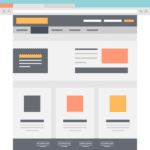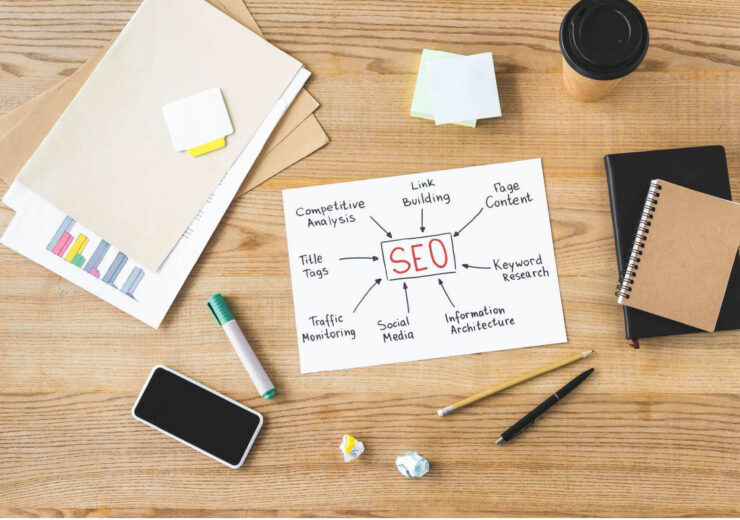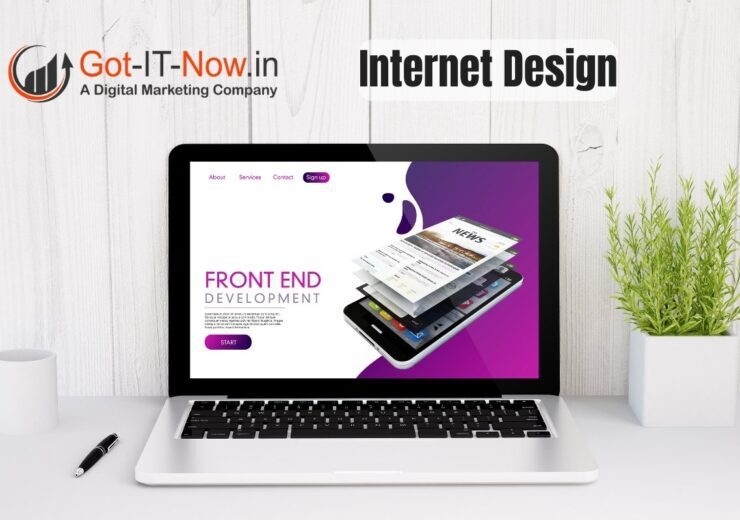What Is Graphic Design? 10 Amazing Tricks & Tips

Table of Contents
What Is Graphic Design? 10 Amazing Tricks & Tips
Are you curious about the world of graphic design? Whether you’re an aspiring designer or a business owner in need of professional design services, understanding the basics of graphic design is essential. From logos to websites, packaging to advertising campaigns, graphic design plays a crucial role in shaping our visual culture. In this blog post, we’ll explore what graphic design is all about and provide 10 amazing tricks & tips for designers looking to up their game. So get ready to dive into the exciting world of graphic design!
What is Graphic Design?
Graphic design is a type of visual communication that combines art and technology to convey a message, idea or concept. It involves creating designs for various mediums such as print, digital media or even physical products like packaging. Graphic designers use typography, images, colors and other elements to create visually appealing designs that capture the audience’s attention.
One of the main goals of graphic design is to solve problems by creating effective visual solutions. Whether it’s designing a logo for a new business or developing an advertising campaign for an established brand, graphic designers are responsible for communicating complex ideas through simple yet impactful visuals.
There are different types of graphic design including branding and identity design, web design, user interface (UI) design and publication design among others. Each type requires specific skills and expertise from the designer.
Ultimately, good graphic design should not only look aesthetically pleasing but also serve its purpose by effectively communicating the intended message to the target audience.
The Different Types of Graphic Design
Graphic design is a vast field that covers various aspects of visual communication. Here are some of the different types of graphic design:
1. Branding: This involves creating an identity for a company or product through the use of logos, typography, color schemes and more.
2. Advertising: This type focuses on creating designs that promote products or services through print or digital ads.
3. Web Design: As the name suggests, it deals with designing websites and web pages to make them visually appealing as well as user-friendly.
4. Packaging Design: From food items to electronic gadgets, this type deals with designing packaging that catches the customer’s attention while also being functional.
5. Environmental Graphic Design: It involves designing graphics for physical spaces like museums, airports, hospitals etc., making them informative and aesthetically pleasing at the same time.
6. Publication Design: This type includes designing layouts for books, magazines and newspapers using images and typography in an engaging way.
7. Motion Graphics: Creating animated graphics to convey messages is what motion graphic designers do best!
Each category has its own unique set of skills required from designers who work within it but all require excellent communication skills along with creativity!
Pros and Cons of Graphic Design
Graphic design is an essential element in the business or marketing industry. It can help elevate a brand’s image and boost its engagement with potential customers. However, like any other field, graphic design has both advantages and disadvantages that must be considered.
One of the benefits of graphic design is its ability to communicate complex messages effectively. With well-designed graphics, businesses can convey their message clearly and concisely to their target audience. Additionally, good designs can create an emotional connection between brands and consumers.
On the downside, high-quality graphic designing requires training and expertise which may not be accessible for everyone. Also, it can be expensive to hire professional designers for small projects hence self-designing may become necessary which could lead to low quality work if one isn’t proficient enough.
Another disadvantage of graphic design is that it’s subjective; what looks great to one person may not appeal at all to another individual. This makes it challenging for designers as they have less control over how people will perceive their work or whether or not it will resonate with them.
Relying on designing tools alone without any idea about creativity might result in visually appalling designs that do more harm than good by creating a negative impact on a brand’s reputation,
While there are some drawbacks associated with graphic design such as accessibility issues among others mentioned above but when done correctly -it’s undoubtedly an effective tool for building strong branding identities!
What are the Best Graphic Design Software?
When it comes to graphic design, having the right software can make all the difference. There are many options on the market, each with their own unique features and capabilities. Here are some of the best graphic design software available today.
Adobe Photoshop is a staple in the industry and is known for its powerful photo editing tools. It allows designers to manipulate images with precision, adjust colors, add special effects and create custom graphics.
Illustrator by Adobe is another popular choice among designers who need to create vector graphics like logos or icons. Its user-friendly interface makes it easy for beginners while also offering advanced features for experienced users.
CorelDRAW offers professional-grade illustration and layout tools that allow designers to produce high-quality designs quickly and efficiently. With an extensive library of built-in templates, CorelDRAW simplifies complex projects while still allowing creative freedom.
Affinity Designer provides a cost-effective alternative to Adobe’s suite of programs without sacrificing quality or functionality. Its intuitive interface includes advanced vector drawing tools, pixel-perfect controls and support for multiple file formats.
Ultimately, choosing the right software depends on your specific needs as a designer. Take into account your budget, level of experience and desired outcome before making a decision on which program will work best for you.
How to Choose the Right Graphic Designer for Your Project
Choosing the right graphic designer for your project can be a daunting task, especially if you are not familiar with the world of design. Here are some tips to help you make an informed decision.
Firstly, it is important to review the designer’s portfolio and experience. Look for their previous work and ensure that they have worked on projects similar to yours.
Secondly, consider their communication skills. A good designer should be able to clearly communicate their ideas and listen attentively to your needs and preferences.
Thirdly, check for references from other clients or professionals in the industry. This will give you an idea of their working style and reputation.
Fourthly, take into account their pricing structure. While it may be tempting to opt for a cheaper option, remember that quality comes at a price.
Trust your instincts. If something doesn’t feel right or if you don’t feel comfortable communicating with the designer during the initial stages of discussion, then perhaps they may not be the best fit for your project.
Choosing a graphic designer requires careful consideration of various factors such as experience level, communication skills, reputation among peers and clients as well as pricing structure. Keep these factors in mind while making your decision so that you can find someone who can bring out the best in your project!
10 Amazing Tricks & Tips for Graphic Designers
As a graphic designer, you’re always looking for ways to improve your skills and create more effective designs. Here are 10 tricks and tips that can help take your graphic design game to the next level.
1. Use White Space Effectively
White space is one of the most important elements in graphic design. Leaving areas without text or images helps give your designs a clean and uncluttered look.
2. Understand Color Theory
Color plays a huge role in how people perceive your designs. Understanding color theory can help you choose colors that complement each other and evoke certain emotions.
3. Keep It Simple
Sometimes less is more when it comes to graphic design. A simple design with clear messaging can be much more effective than something overly complicated.
4. Experiment with Typography
Typography is another key element of graphic design. Play around with different fonts, sizes, and styles until you find the perfect combination for your project.
5. Know Your Audience
Your audience should always be at the forefront of your mind when creating a design. Consider their preferences, needs, and demographics as you work on your project.
6. Stay Up-to-Date on Design Trends
Design trends are constantly evolving – staying up-to-date ensures that your work stays fresh and relevant.
7 . Pay Attention to Hierarchy
Hierarchy refers to the visual organization of information within a layout or composition; it’s essential in making sure viewers see what they need to see first .
8 . Utilize Contrast
Contrast helps make elements stand out from one another , ensuring clarity throughout any given piece
9 . Be Consistent
Consistency makes all parts of a piece feel cohesive; this means using consistent typography , spacing , colour palette etc
10 . Practice Makes Perfect
Graphic Design requires practice just like any other skill so keep experimenting even if it doesn’t go well initially – every mistake will only lead towards improvement!
Conclusion
To wrap it up, graphic design is an essential aspect of marketing and branding for any business. It involves creating visual content that communicates a message to the target audience effectively. The different types of graphic design include web design, advertising, packaging, and more.
While there are pros and cons to using graphic design in your business strategy, the benefits outweigh any potential drawbacks. The right software can make all the difference when it comes to creating stunning designs that stand out from competitors.
When choosing a graphic designer for your project, consider their experience level, portfolio quality, and communication skills. And lastly, keep these 10 amazing tricks & tips in mind as you work on your next project:
1. Keep it simple
2. Use contrast
3. Pay attention to typography
4. Create a mood board
5. Understand color theory
6. Follow current trends (but don’t rely on them)
7. Don’t be afraid of negative space
8. Utilize grids and alignment tools
9. Get feedback from others
10.
Be open-minded
By following these best practices in combination with effective communication between client and designer throughout the process will lead you closer to achieving your desired outcome.
Incorporating eye-catching graphics into marketing materials often leads to better engagement rates among consumers or clients than written copy alone does- this means investing in high-quality graphic designing services should be considered an important investment by every business owner who wants their brand image standing out against competition!




